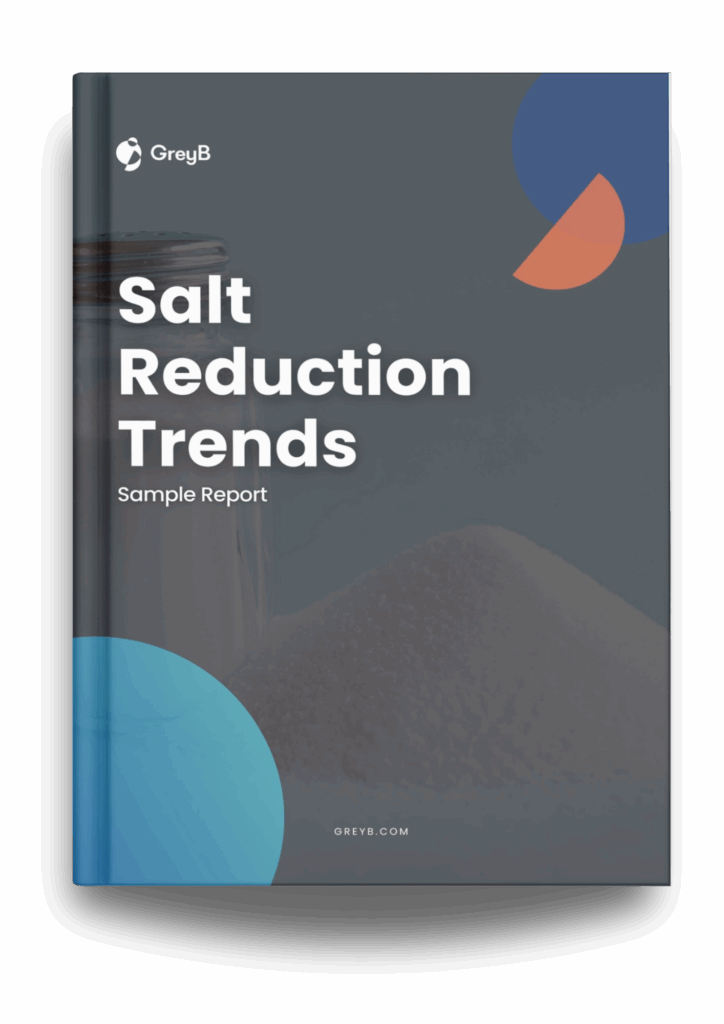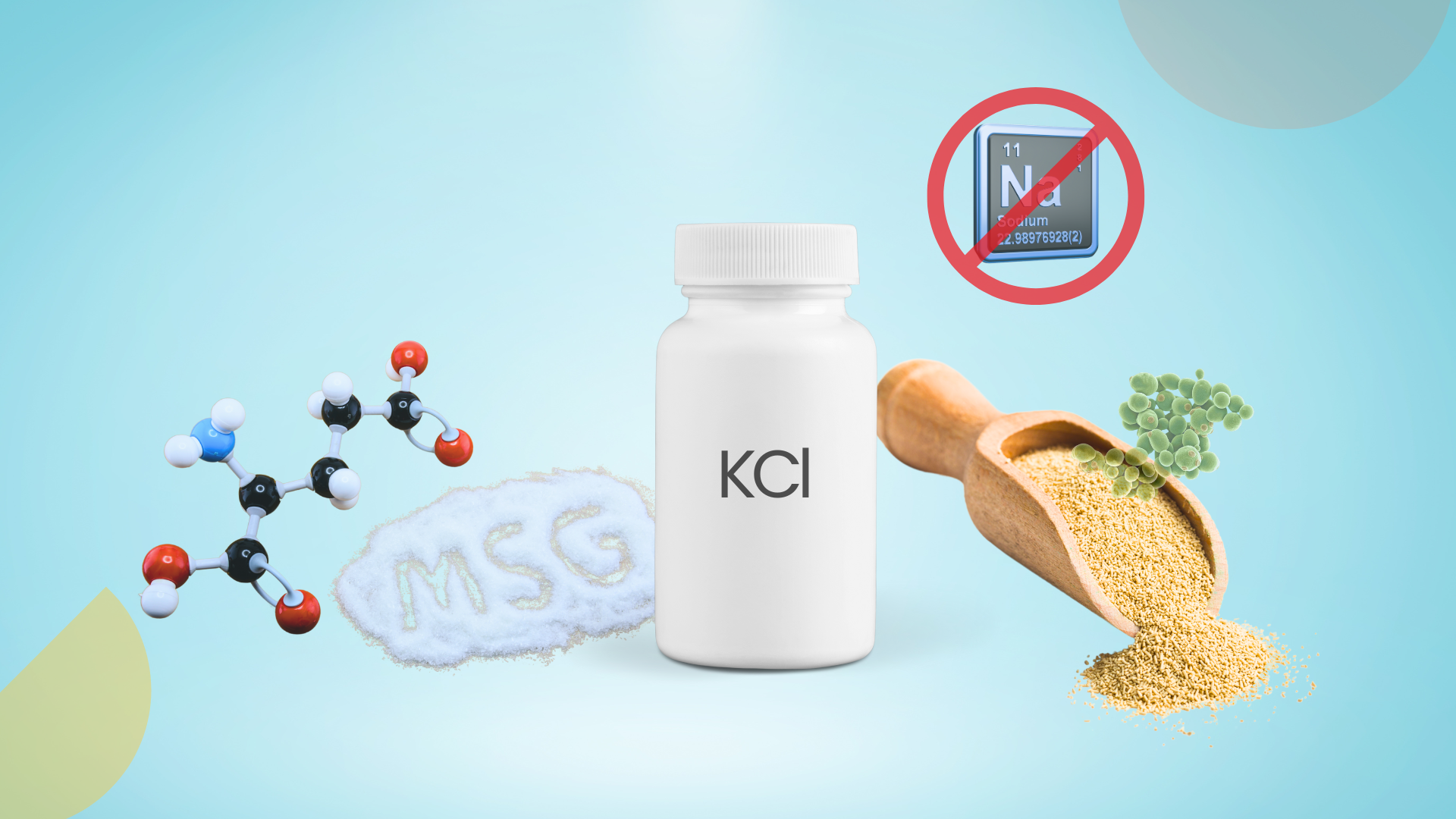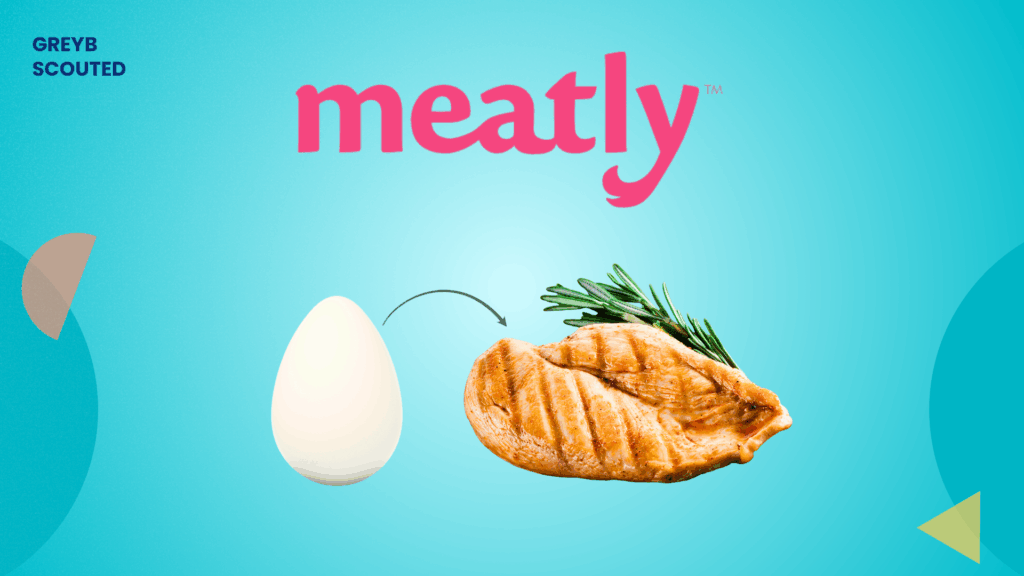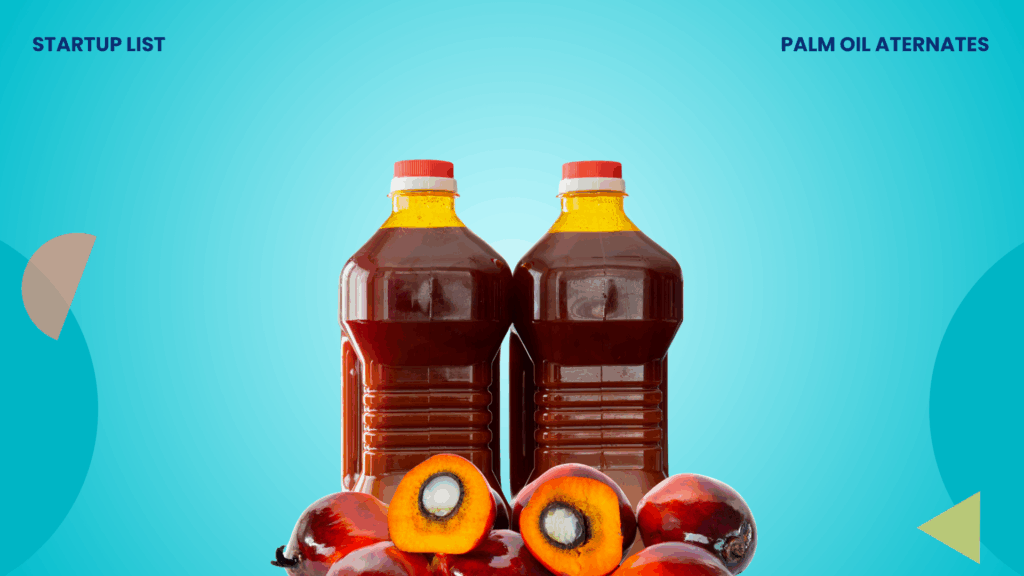The World Health Organization estimates that 1.89 million deaths each year are associated with consuming too much sodium. The average American consumes 3,400 mg/day, far above the FDA-recommended 2,300 mg/day. Food manufacturers are now under increasing pressure to reformulate products while maintaining taste and consumer acceptance.
South Africa already made the first move by legislating sodium reduction, setting mandatory sodium limits for processed foods, including bread, cereals, and snacks. Other organisations, such as the WHO and India’s FSSAI, have also established various benchmarks for sodium levels.
However, many consumers prefer salty flavors, making it challenging to introduce low-sodium alternatives without compromising taste. Traditional salt substitutes, such as potassium chloride (KCl), often have a bitter or metallic aftertaste, which limits their widespread use. Thankfully, there’s a lot of promising research in this field. This report discusses some of the most practical research papers that detail techniques for reducing sodium in foods using alternative substances and processing methods.

Salt Reduction Report
Download ReportTrend 1: Using potassium chloride with MSG produces a similar salty taste in foods.

Several research papers have investigated the use of potassium chloride (KCl) to reduce salt intake. These papers indicate that these salts are effective in packaged foods, such as soups and processed snacks. But the biggest problem with KCl is its bitter and sometimes metallic aftertaste, which can be undesirable at high concentrations. This unpleasant aftertaste prevents its widespread use in sodium reduction strategies.
A study has found a solution by combining potassium chloride (KCl) with monosodium glutamate (MSG) to replace salt. MSG helps mask or counteract the unpleasant aftertastes of KCl. It can also enhance the perception of saltiness, making the reduced-sodium product taste more appealing and less noticeable than its higher-sodium counterpart.
The research shows that by carefully adjusting the amounts of KCl and MSG, it’s possible to reduce sodium in soup by up to 18% without losing, and even improving, overall taste and saltiness perception.
The study found that participants mostly preferred foods with a mixture containing 30 millimolar (mM) potassium chloride (KCl) and 15.6 mM monosodium glutamate (MSG). This is labeled as Mixture 1 in the plot below. This mix helps to mask the less pleasant taste of KCl and enhances the salty flavor, making consumers more accepting of the lower-sodium soup.

Another study from Cornell University showed that optimized levels of KCl and MSG did not lead to a drop in consumer liking, making them viable alternatives for sodium reduction.
Is Monosodium Glutamate (MSG) Safe to Consume?

Source: Ajinomoto
People often think Monosodium glutamate (MSG) is harmful. But scientific research overwhelmingly supports its safety when used in accordance with regulatory guidelines. A Wiley Online Library study analyzed preclinical and clinical trials and found that most reported adverse effects of MSG are based on excessive dosing rather than on real-world consumption levels.
The U.S. Food and Drug Administration (FDA) classifies MSG as “Generally Recognized as Safe” (GRAS), meaning it poses no health risks when consumed in normal amounts (approx. 2,100 mg/day). Additionally, MSG is naturally present in various foods, including tomatoes, Parmesan cheese, mushrooms, and potatoes.
It’s a great way of enhancing umami flavor, making food more palatable while allowing for sodium reduction. Educating consumers on this will significantly help improve any foreseeable issues with product acceptability.
Reducing Sodium in Non-Processed Foods
Outside packaged and processed foods, some studies have explored using KCl as a seasoning for roasted meat, particularly chicken. This study used different Sodium Chloride (NaCl)/potassium chloride (KCl) ratios (0%, 25%, 50%, 75%, and 100%). The results showed that higher KCl replacement levels (75-100%) hurt the tenderness of the chicken. However, the study found that this reduction in tenderness did not significantly impact the panelists’ overall liking scores or purchase intent.
Using KCl here did not significantly affect the meat’s flavor, aroma, color, juiciness, bitterness, and saltiness. This suggests that KCl, when combined with bitterness blockers such as adenosine monophosphate (AMP) and glycine, can be a partial substitute for NaCl in roasted chicken without noticeably compromising the consumer sensory experience (up to 75% replacement).
Aside from potassium, researchers have also explored calcium chloride (CaCl₂) and magnesium chloride (MgCl₂) as alternatives to table salt. These minerals can activate taste receptors (such as TRPV-1) to provide a salty taste, partially replacing the need for sodium chloride.
Finding insights like these is not easy using standard search engines like Google. You’ll be flooded with hundreds of often unrelated results from questionable sources. This is where a research-focused tool like Slate helps out.
Just type in your query, and within seconds, Slate will scour through heaps of research papers and patents to present highly relevant results. If you were to type “Give me the latest innovations in sodium reduction,” this is what you’ll get.

It even has a feature that lets you “chat” with the research papers! Fill the form below to try it out yourself!
Trend 2: Tricking your senses into perceiving enhanced saltiness
Researchers are exploring a promising method to improve salty taste perception using “multisensory synergies.” This involves deceiving the senses—taste, smell, sound, sight, and touch—to reduce the amount of salt people consume while still maintaining flavor.
This paper examines the combination of saltiness with other primary tastes, including umami (savory) and sour. Specific concentrations of umami compounds (glutamate, inosinate, and guanylate) and sour substances (such as citric acid) can enhance salty taste perception by activating taste buds, increasing saliva secretion, and promoting the release of sodium ions. This can be paired with aroma compounds associated with salty tastes (e.g., those found in soy sauce, ham, or certain herbs).
Additionally, incorporating mildly pungent or spicy ingredients (e.g., capsaicin, piperine) that trigger trigeminal nerve sensations can enhance the perception of salty taste. The study suggests that “crisp” or “crunchy” sounds may enhance this perception. However, there is no reliable evidence that it does; it may, however, subjectively increase consumer satisfaction.
These natural approaches reduce the sodium content in foods without relying on artificial substitutes. This approach is worth exploring for those who do not wish to gamble with consumer perception of alternative substances outside the norm in foodstuffs.
Another approach to reducing salt consumption is being explored: altering food composition at the microstructural level.
Trend 3: Changing the physical structure of foods to control salt quantity
This study investigates modifying the physical properties of salt crystals and their distribution in foods to enhance saltiness while reducing consumption. One such approach is using different salt crystal sizes and shapes. Altering these shapes during processing affects the rate of salt dissolution in saliva. Smaller, irregular crystals dissolve more quickly, resulting in a more intense initial saltiness but a shorter duration of effect.
Coating the salt crystals with fat substances can also be beneficial. Encapsulating salt crystals delays the release of sodium into saliva, thereby reducing the intensity of the initial saltiness while prolonging its perception. This study also explores the creation of an uneven distribution of salt within the food. Areas with higher salt concentrations create a sensory contrast, enhancing the overall perception of saltiness even when the overall sodium content is lower.
This study demonstrates that modifying the food’s physical structure enables salt to be released more quickly and reach taste receptors more effectively. This will reduce the amount of salt in the food and, consequently, lower ingested sodium levels.
Notable Products in the Market Using These Sodium Reduction Methods
1. Cargill’s Potassium Pro and FlakeSelect® Products
Ingredients Used:
- For its Potassium Pro and FlakeSelect products, Cargill utilizes agglomeration technology to facilitate the smooth blending of potassium chloride with other ingredients and enhance sensory properties.
Market Perception:
- Cargill’s Potassium Pro is well-regarded in the industry for its effectiveness in reducing sodium by up to 50%. The product is perceived as an ideal solution for lowering sodium in foods such as snacks, soups, and processed meats.
Challenges:
- Despite the benefits, the lingering bitter taste of potassium chloride, particularly in higher concentrations, remains a concern. Educating consumers about the health benefits of reduced sodium and experimenting with MSG is necessary for broader acceptance.
2. Morton Salt’s KaliSel Potassium Chloride

Ingredients Used:
- Potassium Chloride (KCl): Morton uses potassium chloride to replace sodium chloride in various food products. Their products are particularly focused on reducing sodium levels in processed foods.
- Sodium Chloride (NaCl): For their Lite Salt™, Morton combines sodium chloride and potassium chloride in a 50/50 mix, providing an easier entry point for sodium reduction without drastically altering the taste profile.
Market Perception:
- Morton’s KaliSel is considered a reliable and effective tool for sodium reduction in the food industry. It’s used in various products, including processed meats, soups, and snacks. The mix of KCl and NaCl in Lite Salt has a more balanced flavor, making it more acceptable to consumers compared to pure potassium chloride.
- Consumer Acceptance: Lite Salt™ has been well received in the market, especially amid growing awareness of sodium-related health risks. However, traditional consumers accustomed to the taste of regular table salt may still resist entirely switching to reduced-sodium products.
Challenges:
- The potential for consumers to switch to full-sodium products remains high, especially in markets where salty flavors are ingrained in food culture. Additionally, production costs may limit broader adoption, as sodium reduction often requires more expensive ingredients and processes.
3. ICL Food Specialties’ Salona Low Sodium Sea Salt

Ingredients Used:
- Natural Sea Salt: ICL’s Salona product utilizes natural sea salt with a lower sodium content than regular table salt.
- Potassium Chloride (KCl): In some formulations, potassium chloride is used alongside sea salt to reduce sodium content further.
Market Perception:
- ICL’s Salona is positioned as a natural and clean-label alternative to traditional salt, making it an attractive proposition for consumers seeking healthier food options. The use of sea salt appeals to those who prefer natural ingredients, and the addition of potassium chloride helps achieve the sodium-reduction goal.
- Consumer Acceptance: The product’s natural attributes make it appealing to health-conscious consumers; however, its success largely depends on educating consumers about the benefits of potassium chloride and the importance of sodium reduction.
Challenges:
- Like other KCl-based products, the taste can still be challenging, especially at higher concentrations. Additionally, the premium pricing of sea salt may limit its widespread adoption in price-sensitive markets.
4. Ettlinger Corporation’s Potassium Chloride (KCl)
Ingredients Used:
- Potassium Chloride (KCl): Ettlinger Corporation provides potassium chloride as a key ingredient for sodium reduction in foods like soups, sauces, and snacks.
- Other Flavor Enhancers: Ettlinger’s products may also include other flavor enhancers or masking agents to reduce the undesirable aftertaste of KCl.
Market Perception:
- Ettlinger’s potassium chloride-based products are used primarily in industrial food manufacturing. These ingredients are considered reliable for sodium reduction, but their application is mainly in processed and packaged foods, where the consumer’s perception of taste can be more easily controlled.
- Consumer Acceptance: As Ettlinger’s products are mainly targeted towards food manufacturers, the focus is more on the technical benefits of sodium reduction rather than consumer perceptions. However, similar challenges related to the taste of KCl exist.
Challenges:
- Scaling up the use of potassium chloride in the market without compromising taste remains a challenge. The lack of widespread consumer education around potassium chloride’s safety and efficacy can limit its appeal to manufacturers focused on consumer-centric branding.
5. Ajinomoto’s MSG Utilization for Sodium Reduction

Ingredients Used:
- Monosodium Glutamate (MSG): Ajinomoto uses MSG to enhance the umami flavor of foods, helping balance the flavor profile in sodium-reduced products.
- Umami Compounds: In addition to MSG, Ajinomoto may use other umami-enhancing ingredients such as glutamates and inosinate to make foods taste more savory without adding excessive sodium.
Market Perception:
- Ajinomoto is a leader in promoting the use of MSG to reduce sodium. The company has made significant efforts to educate consumers about MSG’s safety, emphasizing its role in enhancing flavor without the adverse health effects associated with high sodium intake.
- Consumer Acceptance: MSG’s reputation has been controversial, with some consumers still associating it with adverse health effects, despite widespread scientific consensus about its safety. However, Ajinomoto’s focus on consumer education has helped improve acceptance, particularly in Asian markets where MSG has long been a part of the food culture.
Challenges:
- The primary challenge remains overcoming consumer reluctance to MSG, despite its generally recognized safety. Cultural misconceptions about MSG continue to hinder its adoption in markets such as North America and Europe, where alternative strategies for sodium reduction are more prevalent.
Conclusion and Future outlook
Inventors are developing various solutions to reduce the sodium content of foods and beverages. In addition to the ones mentioned above, non-thermal processing and plant-based extracts are also being studied. Techniques such as High-Pressure Processing (HPP) have shown potential to enhance the perception of saltiness in raw meat products. But they’re not quite effective in cooked products, so research is still out on that.
Similarly, yeast and other plant-based extracts are used as alternative flavor enhancers in foods. These have high sensory acceptance and great potential to reduce sodium content. However, both require further study, and there is a market gap for them.
These innovations are great opportunities for food industry leaders to create solutions that consumers love. By understanding their potential and market viability in detail, you’ll be better able to decide on a strategy to reduce sodium in your food products.
But first, there are some critical factors to consider when exploring various sodium reduction techniques:
- Their efficacy and sensory impact on the foods,
- Regulatory approvals for any new ingredients,
- Consumer acceptance insights to ensure profitability,
And more! This research can be time-consuming and will delay the market entry of your planned projects if not expedited. GreyB’s innovation scouting expertise will help speed up your R&D on this new foodtech trend.
Please share all your queries with us in the simple form below. Our experts will get back to you with a more in-depth analysis tailored to you.
Get in touch
Please share your query below








